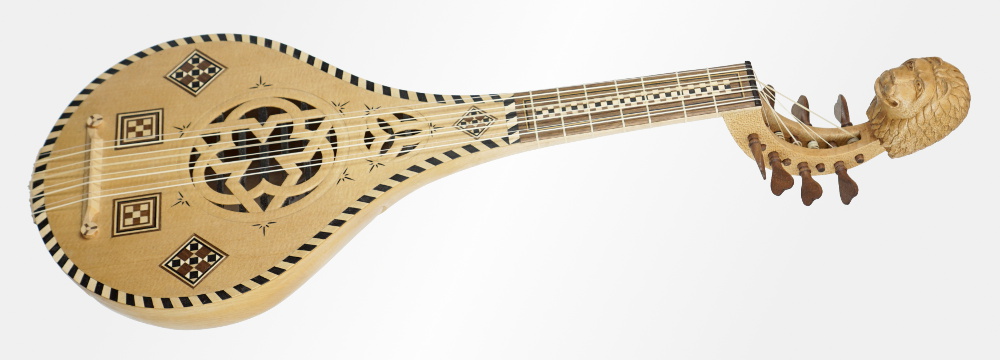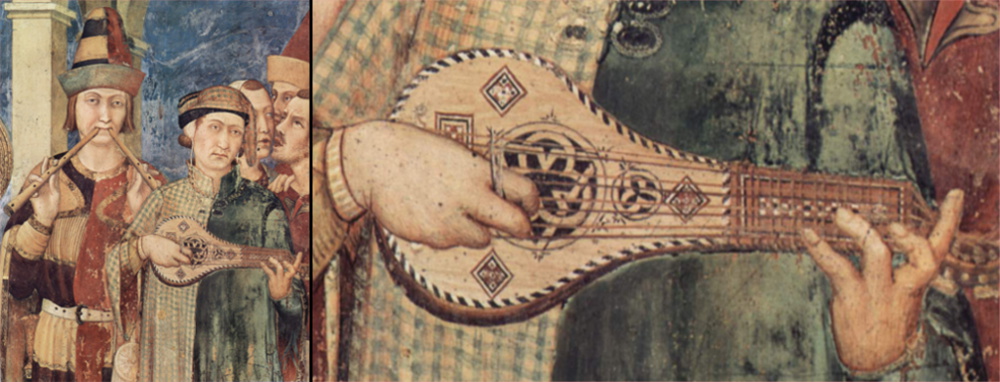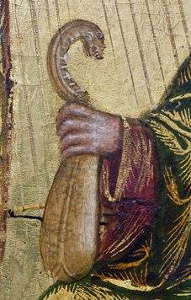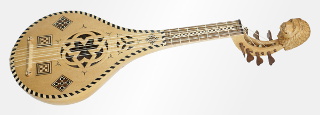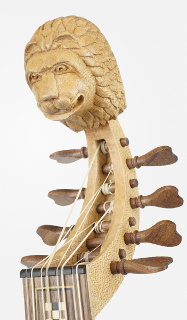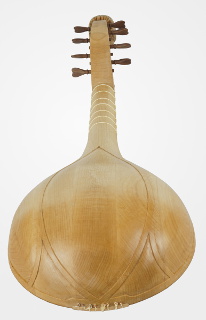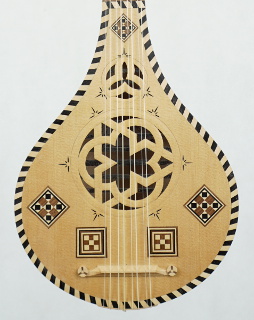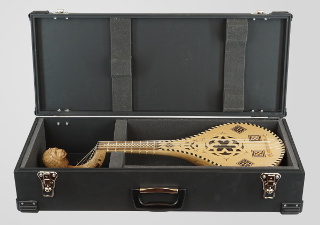
|
Martini Gittern |
|
Martini Gittern
This is a reconstruction, commissioned by Ian Pittaway, of a gittern depicted in Simone Martini's Saint Martin is knighted, 1312–1325, in the Capella di San Martino, Basilica di San Francesco, Assisi, Italy.
Martini Gittern - detail of the musicians and the instrument
Valle Romita Gittern I reproduced, as accurately as possible, most of the important features of the instrument depicted in the painting, including the string layout and the distinctive roses and inlay patterns. I made the neck narrower, because the implausible width of the neck in the painting would make fingering difficult. The head is not visble, so, at Ian's request, I carved a typical medieval lion's head, based on a carving in Rosslyn Chapel, Edinburgh. The back is also hidden. To match the impressive soundboard with something more complex than a simple central spine, I created some branching strapwork, inspired by a rare depiction of the back of a gittern on the Valle Romita Polyptych, painted c. 1410 by Gentile da Fabriano. The tuning pegs are another small deviation. Many gittern paintings, including these, show "hammer head" pegs. They are undoubtedly authentic, but potentially weak, and hardly decorative. I substituted heart-shaped peg heads, which are simple but attractive. Of course, if you do want hammer heads, I can make them. String length is 45.5cm. The tuning of the original is uncertain, but Ian derived the following schedule from the Berkeley Theory Manuscript, which contains the sole surviving documentary evidence for gittern tuning. It works brilliantly : a A d' d g' g c'' c'
The octave stringing on each course creates a rich, full sound. I usually fit Nylgut strings, which are robust and reliable. I now use Aquila's symthetic fret material, too. Natural gut is an option if you prefer it. GalleryClick images to enlarge.Sound Clips
Prices
To order or enquire, pleasecontact me Cases - Excellent cases can be ordered from specialist manufacturers such as Kingham MTM, but they're pricy. I can supply an attractive, custom-built plywood case, black with chrome fittings, for £220 when ordered with an instrument. Delivery - the price depends on where you live. Please enquire. I hate it when websites say "Phone for a quote", so to give you some idea - getting a baroque guitar in its case to America, including insurance, is currently about £170. Getting one to Kent is about half that. Waiting time, from placing an order to clutching your new baby, is currently about 16 months. It's very approximate, because the schedule often contains items that are somewhat experimental, and they may take more or less time to complete than anticipated. Usually more. Deposit- I usually ask for £150 (non-returnable unless I'm dead, insane, incapacitated or incarcerated) to secure an order and cover materials. Once that's paid, your order is entered into my Magic Book. Nothing happens for several months, then you receive an email to tell you I've started construction. A few weeks later, a big parcel arrives, and you squeal with delight.
Anote on HUMIDITY - delicate wooden instruments are remarkably resilient, but
they can have major problems with both high and low atmospheric humidity levels. I keep my workshop at the
recommended humidity level, between 45% and 50%, and I strongly recommend that instruments are kept as close
to that range as possible. Electronic humidity meters are available cheaply on the Internet. They're small enough
to keep in your instrument's case. |
 More Instruments |
 Diabolus Homepage |
|
 Email for Diabolus |
